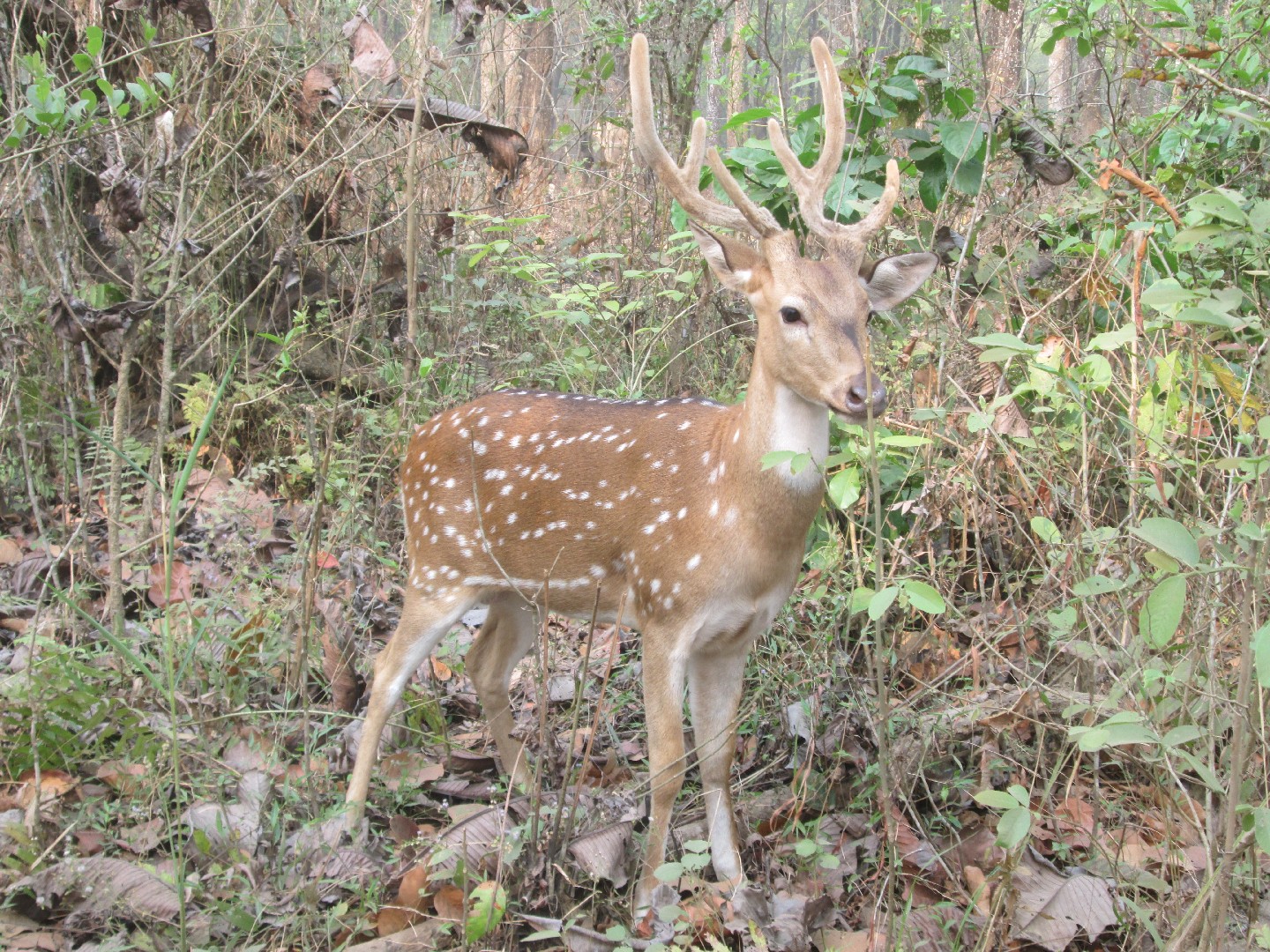Chital
A species of Chital and hog deer, Also known as Chital deer, Indian spotted deer Scientific name : Axis axis Genus : Chital and hog deer
Chital, A species of Chital and hog deer
Also known as:
Chital deer, Indian spotted deer
Scientific name: Axis axis
Genus: Chital and hog deer
Content
Description General Info
 Photo By Bharatadhikarimb , used under CC-BY-SA-4.0 /Cropped and compressed from original
Photo By Bharatadhikarimb , used under CC-BY-SA-4.0 /Cropped and compressed from original Description
The chital is a moderately sized deer. Males reach nearly 90 cm (35 in) and females 70 cm (28 in) at the shoulder; the head-and-body length is around 1.7 m (5.6 ft). While immature males weigh 30–75 kg (66–165 lb), the lighter females weigh 25–45 kg (55–99 lb). Mature males can weigh up to 98 to 110 kg (216 to 243 lb). The tail, 20 cm (7.9 in) long, is marked by a dark stripe that stretches along its length. The species is sexually dimorphic; males are larger than females, and antlers are present only on males. The dorsal (upper) parts are golden to rufous, completely covered in white spots. The abdomen, rump, throat, insides of legs, ears, and tail are all white. A conspicuous black stripe runs along the spine (back bone). Chital have well-developed preorbital glands (near the eyes) which have stiff hairs. They also have well-developed metatarsal glands and pedal glands located in their hind legs. The preorbital glands, larger in males than in females, are frequently opened in response to certain stimuli. Each of the antlers has three lines on it. The brow tine (the first division in the antler) is roughly perpendicular to the beam (the central stalk of the antler). The antlers, three-pronged, are nearly 1 m (3.3 ft) long. Antlers, as in most other cervids, are shed annually. The antlers emerge as soft tissues (known as velvet antlers) and progressively harden into bony structures (known as hard antlers), following mineralisation and blockage of blood vessels in the tissue, from the tip to the base. A study of the mineral composition of the antlers of captive barasinga, chital, and hog deer showed that the antlers of the deer are very similar. The mineral content of the chital's antlers was determined to be (per kg): 6.1 milligrams (0.00022 oz) copper, 8.04 milligrams (0.000284 oz) cobalt, and 32.14 milligrams (0.001134 oz) zinc. Hooves measure between 4.1 and 6.1 cm (1.6 and 2.4 in) in length; hooves of the fore legs are longer than those of the hind legs. The toes taper to a point. The dental formula is 0.1.3.33.1.3.3, same as the elk. The milk canine, nearly 1 cm (0.39 in) long, falls off before one year of age, but is not replaced by a permanent tooth as in other cervids. Compared to the hog deer, the chital has a more cursorial build. The antlers and brow tines are longer than those in the hog deer. The pedicles (the bony cores from which antlers arise) are shorter and the auditory bullae are smaller in the chital. The chital may be confused with the fallow deer. The chital is darker and has several white spots, whereas the fallow deer has white splotches. The chital has a prominent white patch on its throat, while the throat of the fallow deer is completely white. The hairs are smooth and flexible. 
General Info
Lifespan
12-20 years
Diet
Chital is primarily a browser, feeding on leaves, shoots, and fruits. They show a particular fondness for bamboo shoots and other foliage, alongside regular consumption of bark and grass.
Appearance
Chital is a medium-sized deer with a compact body structure. Males are slightly larger than females, bearing velvet-covered antlers for most of the year. Their coat is short and smooth, primarily showing a vibrant rusty red, embellished with white spots that form elegant rows. The undersides and inside of the legs are white. The tail is moderately long, with a dark stripe running down its length.
Behavior
Chital is primarily crepuscular, active during the dawn and dusk. This species is known for its grazing habits, feeding primarily on foliage, grass, and fruit. Socially, chital forms modest harems led by a dominant male and exhibits territorial behavior, primarily during breeding seasons. Its spotted coat provides efficient camouflage in woodland habitats.